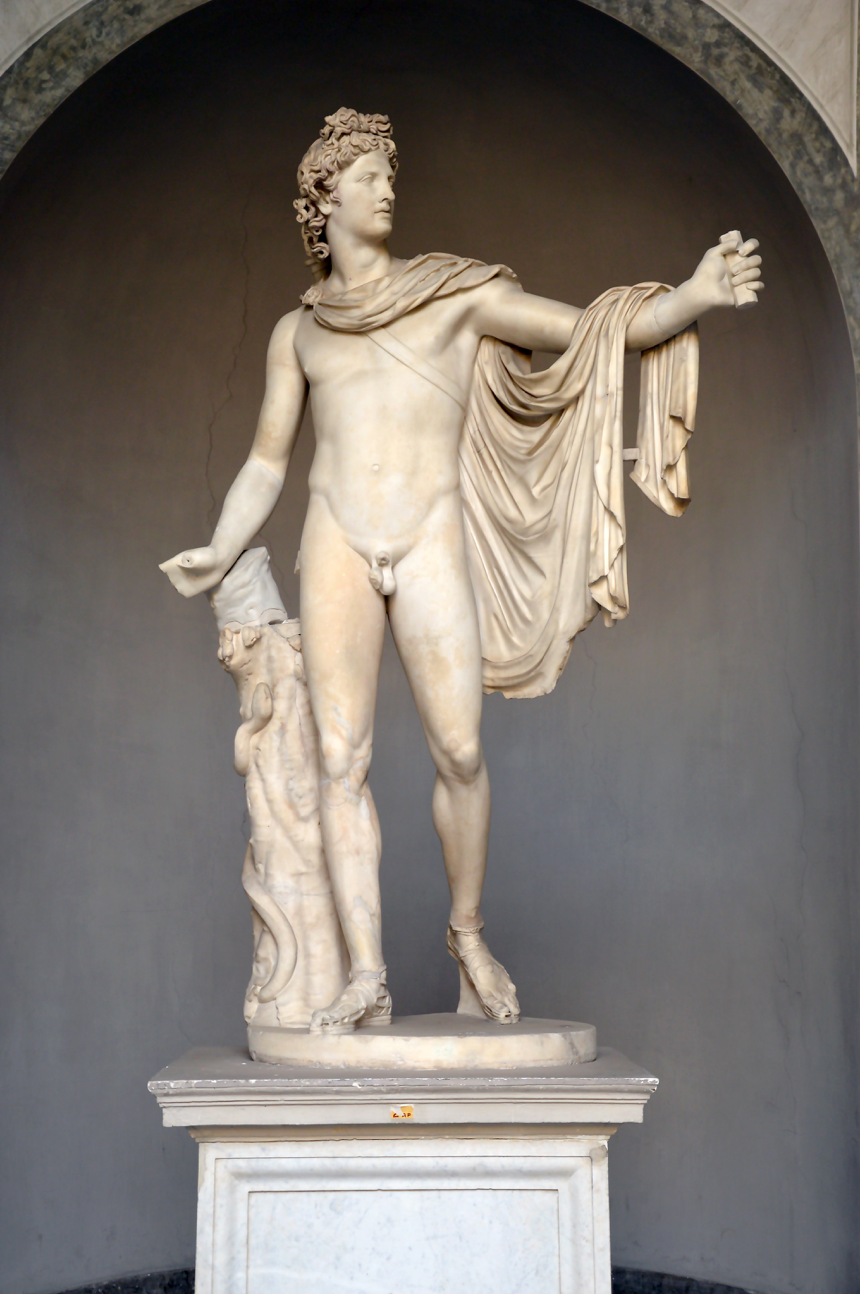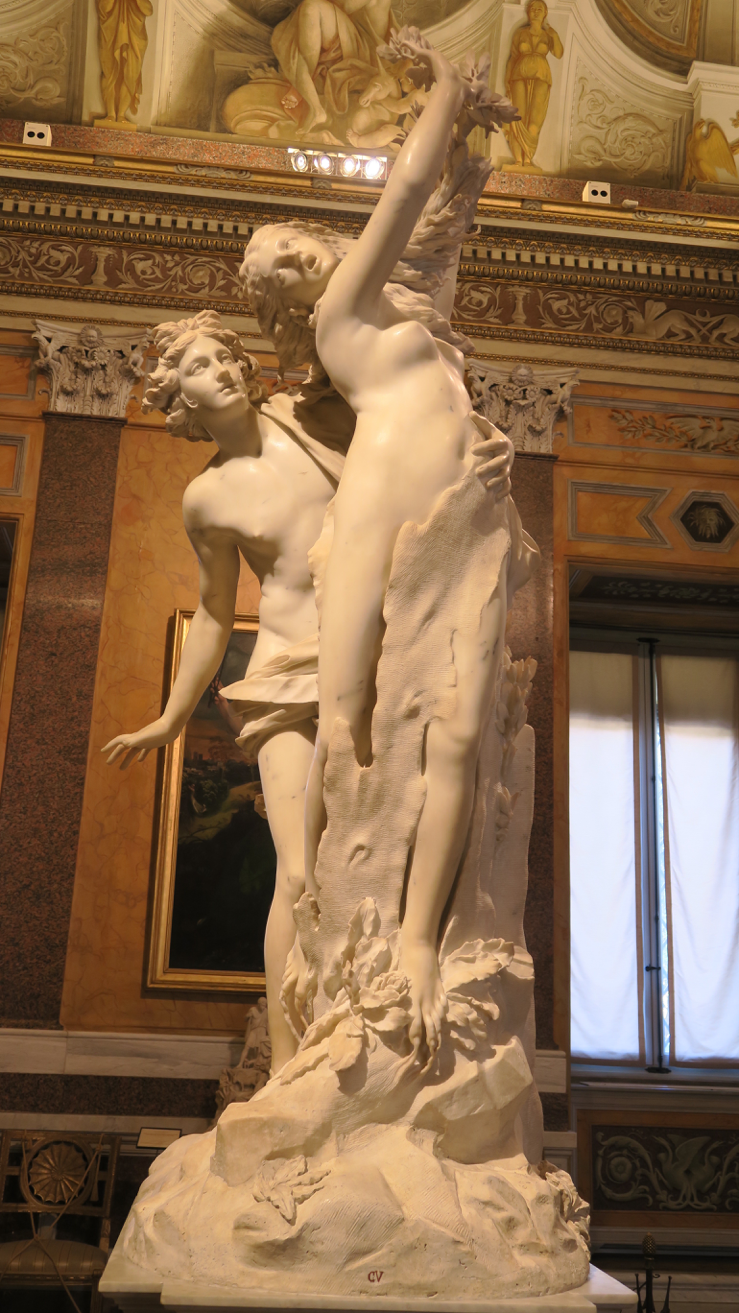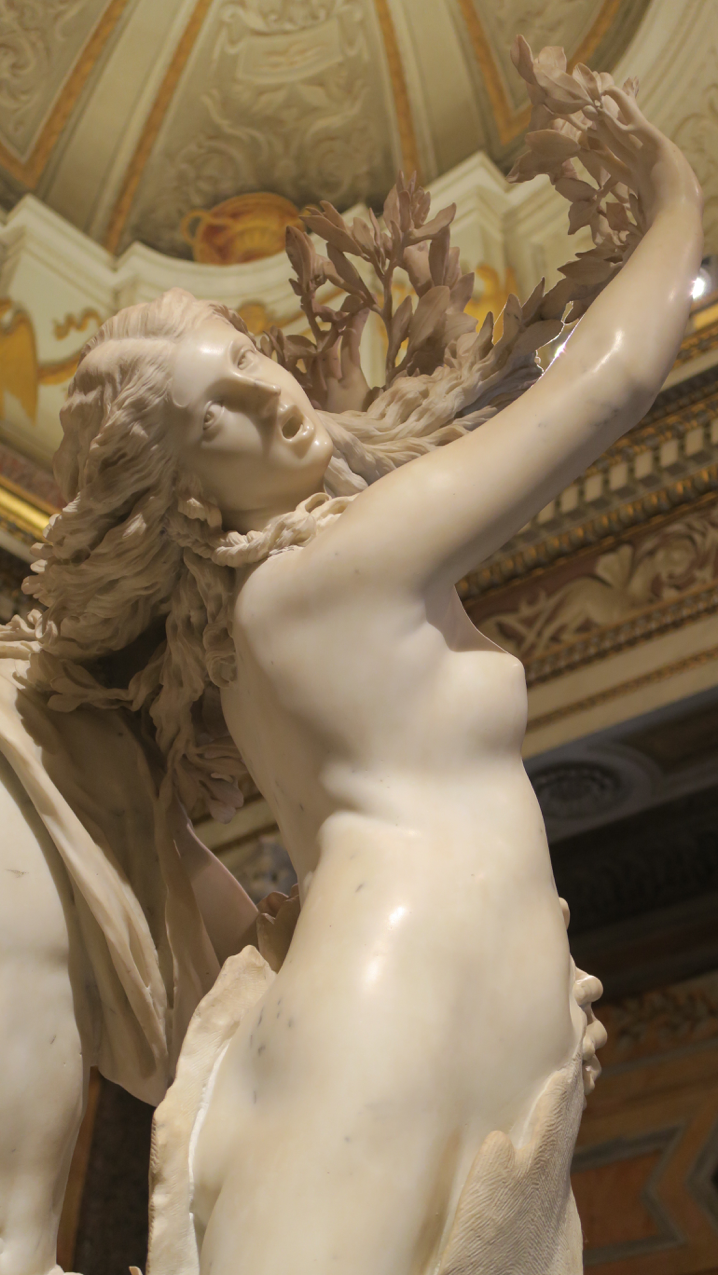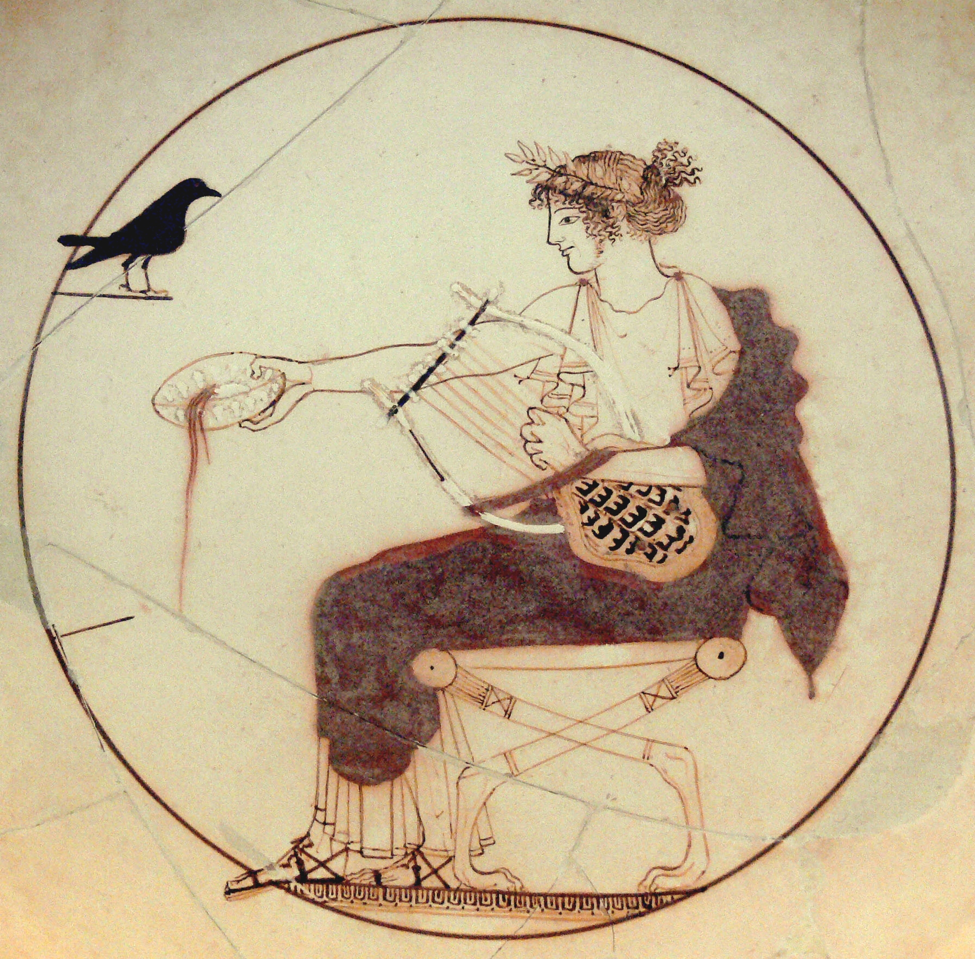Apollo
Roman name: Apollo
Epithets: Pythian (for killing the Python), Lycian (unknown, may be connected to Lycia), Far-Shooter (for his archery skills), Delian (for his birth myth), Phoebus (Shining One), Delphinius (God of the Dolphins)
Symbols: lyre; bow and arrow; laurel, myrtle, or bay tree; crow or raven; omphalos; dolphin; tripod
Functions: god of youth, music, prophecy, archery, and medicine (both disease and healing). The Romans conflated him with the Greek god of the sun, Helius.

The Birth of Apollo
Apollo was one of the two children born to Zeus and the goddess, Leto. When Leto was pregnant with Apollo and Artemis, she was looking for a place to give birth, but no place was willing to allow her to give birth on its territory. There was a rumor that Apollo was going to be a wild and terrible divinity, and no place wanted to take the risk that Apollo might harm his birthplace after he was born. But Leto finally convinced the small island of Delos to allow her to give birth there by promising that Apollo would have a great temple there.
But even though Leto wanted to give birth on Delos, at first she wasn’t able to do so. This was because Hera, who was jealous of Zeus’ affair with Leto, kept Eileithyia, the goddess of childbirth, away from the island. Because no birth could take place unless Eileithyia was present, this was one way that Hera could at least temporarily prevent the children of her rivals from being born. Hera would later play a similar trick with Heracles [see Heracles]. In the case of Apollo and Artemis, Iris (who was a rainbow, and was one of the gods’ messengers) was dispatched to bring Eileithyia, and according to the Homeric Hymn to Apollo, as soon as she stepped onto the island, Apollo and Artemis were born.
Apollo and Artemis
Apollo and his sister often avenged their mother for the wrongs done to her. The twins killed the giant Tityus because he had attempted to rape Leto. The twins also took vengeance on Niobe, who had seven sons and seven daughters. Niobe boasted that she had born more and greater children than Leto. Angered at Niobe’s hubris (arrogance, excessive pride, and the desire to challenge the gods), Apollo and Artemis shot Niobe’s children with arrows until they were all dead. Niobe wept uncontrollably until she turned into a stone which still spouts tears.
Both Apollo and his sister were excellent archers, and the bow and arrow were important symbols for both of them. Plagues and unexplained deaths were attributed to Apollo or Artemis shooting the victims with arrows (the beginning of the Iliad is a good example of this). The lyre was most associated with Apollo as the god of music, however, it was created by the god Hermes [see Hermes].
Apollo’s Unhappy Love Affairs
Apollo was unlucky in a number of his love affairs; in fact, he seems never to have been happy in love. He fell in love with Cassandra, the daughter of Priam, king of Troy, and in order to win her consent, he offered her the gift of prophesy. But after she was given the gift, Cassandra changed her mind and refused his advances. Because a god cannot take back a gift once it has been given, Apollo could not prevent Cassandra from correctly predicting the future, so he cursed her to never be believed even though her predictions were always correct. Another time, Apollo pursued the nymph, Daphne, but she fled from him, calling upon the gods to save her. The gods transformed Daphne into a laurel tree and Apollo, being disheartened, vowed that the laurel would be his special plant forever. Another notable love of Apollo was Hyacinth, a Spartan boy. Hyacinth was killed accidentally by a discus that Apollo threw toward him in a game. From the blood of the boy, the god made a flower grow and named it hyacinth, after the boy. The flower is red and has white markings that resemble the letters AI, which sound like the Greek mourning cry. (How would you categorize this myth?)


Apollo bedded the mortal Coronis, but she then decided to take a mortal lover. Apollo was informed of her betrayal by a crow, which he changed from its previous white color to black. (This explains why all crows are now black.) Coronis was pregnant with Apollo’s child when she decided to sleep with the mortal, so Apollo killed them both, but he rescued the child from her womb. The child, Asclepius, was raised by the good centaur Chiron [see Centaurs], from whom he learned how to heal. Asclepius became so good at healing that he started to bring the dead back to life. This angered Zeus, so he killed Asclepius with his thunderbolt. Apollo was furious, so he killed the Cyclopes who made the thunderbolts as retaliation. Zeus wanted to imprison Apollo in Tartarus as punishment, but Leto intervened on her son’s behalf and convinced Zeus to force Apollo to live as a mortal for a year. Asclepius was deified and became a god of medicine and healing. The caduceus, Asclepius’ special staff, became a symbol of healing.

Apollo in the Trojan War
In the Trojan War, Apollo was on the side of the Trojans. The reason for this is unclear, although his epithet, Lycian, may mean “from Lycia” (in what is now southern Turkey).
The Origin of Apollo
It is unclear where the god Apollo came from. He was not originally a god of the Mycenaeans (the Greek-speaking peoples who migrated into the Greek peninsula sometime around 1900 BC), nor was he one of the pre-Hellenic gods of the indigenous people. His mother and sister were both Asiatic goddesses, but there is no clear connection between them in origin. Again, his epithet, Lycian, may point to a Near Eastern connection.

